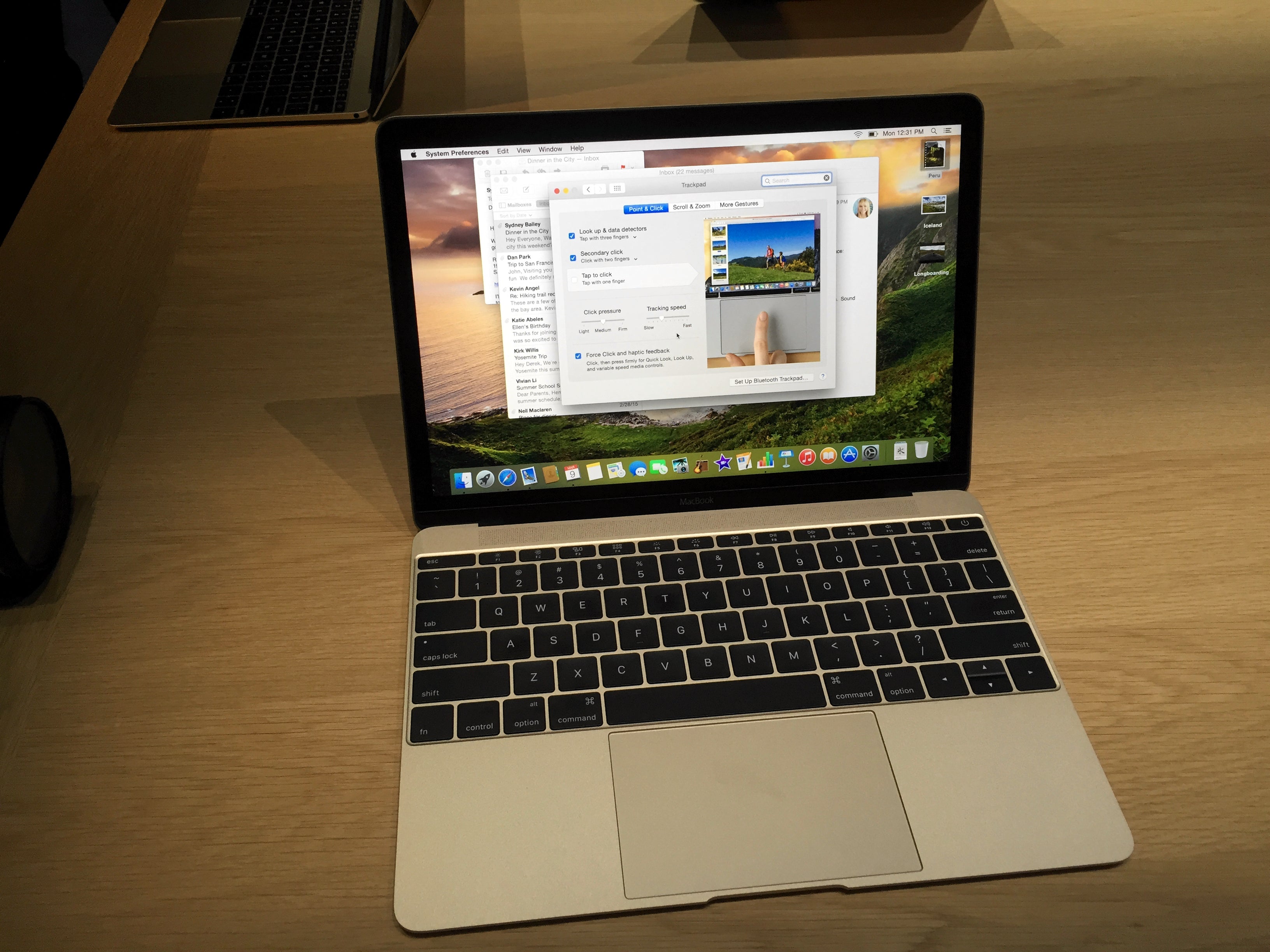5) Click on the 'Trackpad Options'.
6) Drag the 'Scrolling Speed' to the appropriate position.
Then click 'OK' and slide your mouse use the trackpad to see if the speed is suitable. Repeat the above if it is not appropriate.
2. How to Adjust Force Click on MacBook Trackpad
Force Click and Force Touch (now called 3D Touch) can perform assistive operations by detecting pressure on the Mac Trackpad. You can easily change Force Click and 3D Touch functions on your MacBook to fix trackpad is over sensitive.
1) Go to the Apple menu and select 'System Preferences.'
2) Then go to the 'Trackpad'.
3) Select the 'Point & Click' tab.
4) Make sure 'Force click and haptic feedback' is checked as ON.
5) Look for the 'Click' slide switch and change this setting to fit the Force Click pressure you want.
Macbook Air Trackpad Problems
Strength comparison:
Light– a gentle press activates a click and Force Click.
Medium– the default option for click and Force Click pressure.
Firm– firm deliberate click pressure must be placed on the trackpad to activate Force Click.
3. Trackpad not Responding and Checkif it is Disabled
When the Trackpad does not work properly or not respond, you can try turning the touchpad off/on to reactivate it. You can disable this option if you have an external keyboard.
How to switch on/off Trackpads:
1)Click the Apple menu and go to 'System Preferences'.
2)Select the 'Accessibility' panel.
3)Select 'Mouse & Trackpad' from the Interacting section on the left.
4)Check to 'Ignore built-in trackpad when mouse or wireless trackpad is present'.
If you have enabled this function and find it not to be useful, just disable it again through the same settings by unchecking the 'Ignore built-in trackpad'.
The above methods also apply to the MacBook trackpad hard to click.
New Macbook Air Best Buy
4. Reset NVRAM
NVRAM also called as 'non-volatile random-access memory'. It is a small portion of computer memory used to store certain settings in a location that macOS can quickly access. Resetting NVRAM may be helpful when it comes to some issues that are not hardware failures.
1.Shut down computer first.
2.Press command+option+R+P Simultaneously.
3.Press the power button to turn MacBook on, while keeping press on these buttons.
4.Wait for the computer to make four sounds and then release it.
5.After four sounds, press the power button again to turn it on. Test if the trackpad is back to normal.
5. Forced Press of the Trackpad to Connection
If you have tried all the ways to replace the battery, trackpad and changed all available software settings, then you can try the following this step.
New Macbook Air Trackpad Problems
1)Put the MacBook on the flat.
2)Press the diagonal of the trackpad with two fingers at the same time.
3)Then replace the other diagonal.
4)Repeat all four corners and perform as many times as necessary until the sensitivity issue is resolved.
6. Replacing Power Adapter
Consider replacing the power supply to resolve the issue. If the power supply of the power adapter is unstable, it may also cause the touchpad to respond sensitivity.
If the problem still does not improve, it is recommended that you back up your macOS data and reinstall the macOS. After reinstalling the operating system, if the macbook trackpad too sensitive, it may need to be hardware resolved by Apple or an authorized servicer.
If the above method is not useful, then it is recommended that you replace the trackpad or disassemble to reconnect the touchpad cable of MacBook. Some times MacBook trackpad not clicking well cause by the poor connection of trackpad cable. There is a video about How to Replace the Trackpad on a MacBook Pro A1286 for you if you need to replace a broken touchpad. Other MacBook models can also be used for reference.
This article summarizes 6 ways for MacBook air trackpad too sensitive 2019. These are the best suggestions I think. If you know any tips that make the MacBook trackpad easier to use, please feel free to share it below this article.
Related Articles:

